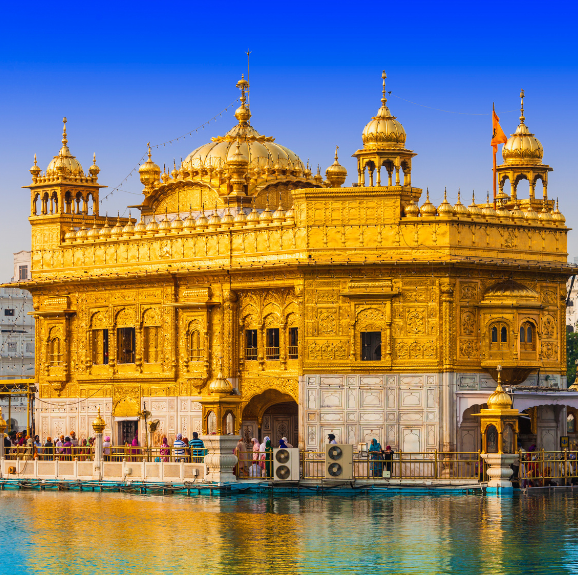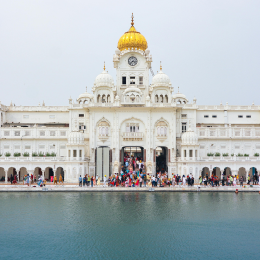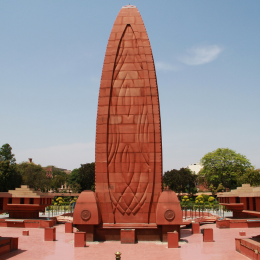Kashmir, often referred to as "Paradise on Earth," is a stunning region nestled in the northernmost part of India, now part of the union territory of Jammu and Kashmir. Bordered by the Himalayas to the east and the Pir Panjal Range to the west, Kashmir
is a land of extraordinary natural beauty, offering a scenic landscape of snow-capped mountains, lush green valleys, tranquil lakes, and serene meadows. Kashmir has inspired poets, artists, and travelers
for centuries, and it continues to captivate those who visit.
Kashmir: Paradise on Earth
Kashmir , India



Overview
Geography and Natural Beauty
Kashmir’s geography is as diverse as it is beautiful. The Kashmir Valley lies at an altitude of around 1,600 meters (5,200 feet), and is surrounded by some of the highest peaks of the Himalayas and Pir Panjal Range, creating a dramatic backdrop of snow-covered
peaks, alpine meadows, and crystal-clear rivers. The region is famous for its lakes, the most iconic being Dal Lake in Srinagar, often referred to as the "Jewel in the crown of Kashmir". The lake is known
for its floating houseboats and shikaras (traditional wooden boats), offering a unique and peaceful way to explore the surroundings.
Dal Lake is complemented by Nigeen Lake and Wular Lake, which further enhance the region's water-based charm. Wular Lake, one of the largest freshwater lakes in Asia, is famous for its vastness and biodiversity.
The meadows and forests of Kashmir also add to the allure. The Gulmarg region, for example, is famous for its vast expanses of grassy meadows and skiing resorts, while Sonamarg and Pahalgam offer opportunities for trekking, camping, and nature walks amidst
the breathtaking scenery.
Srinagar: The Summer Capital
The city of Srinagar, the summer capital of Jammu and Kashmir, is the cultural and political hub of the region. Srinagar is known for its beautiful Mughal Gardens, such as Shalimar Bagh, Nishat Bagh, and Chashme Shahi, which were constructed during the
reign of the Mughal Emperor Jahangir. These gardens are an exquisite blend of Persian, Mughal, and Kashmiri architecture, with symmetrical layouts, cascading fountains, and terraced flowerbeds, providing
a spectacular sight against the backdrop of the snow-covered mountains.
The Jama Masjid (a beautiful wooden mosque) and the Shankaracharya Temple (dedicated to Lord Shiva) also stand as significant landmarks in the city, showcasing Kashmir’s rich religious diversity.
In Srinagar, visitors can take a peaceful boat ride on Dal Lake, staying on traditional houseboats—wooden boats converted into floating hotels—offering a unique experience of living on water. The shikaras glide across the lake, offering stunning views
of the surrounding mountains, gardens, and floating markets, where local vendors sell handicrafts and fresh produce.
Kashmir has a rich and diverse culture influenced by Hindu, Buddhist, and Islamic traditions. The region is known for its Kashmiri handicrafts, which include intricate Pashmina shawls, Kashmiri carpets, and paper-mâché items. Pashmina wool, sourced from
the Himalayan goats, is highly prized for its softness and warmth, and these shawls are intricately woven with traditional patterns, often using silk threads.
Kashmiri carpets are also world-renowned for their fine craftsmanship, with intricate designs reflecting Persian and Central Asian influences. The art of wood carving is another traditional skill practiced in Kashmir, with walnut wood being sculpted into
ornate furniture and decorative items.
Kashmir is also home to a rich Sufi heritage. The region has long been a center for Sufi saints, whose teachings and mysticism continue to influence the cultural fabric of the region. The Hazratbal Shrine and the Shah-e-Hamdan Shrine are among the many
revered Sufi shrines in the region, attracting pilgrims from all over the world.
Kashmir has a rich and diverse culture influenced by Hindu, Buddhist, and Islamic traditions. The region is known for its Kashmiri handicrafts, which include intricate Pashmina shawls, Kashmiri carpets, and paper-mâché items. Pashmina wool, sourced from
the Himalayan goats, is highly prized for its softness and warmth, and these shawls are intricately woven with traditional patterns, often using silk threads.
For dessert, Kahwa, a traditional Kashmiri green tea infused with saffron, almonds, and cardamom, is a popular drink, often served with Bakarkhani (a type of bread) and Firni (a rice pudding).
The Kashmiri pulao, made with dry fruits, nuts, and saffron, is another famous dish, representing the region’s love for rich, aromatic foods.
While Kashmir is often associated with its serene landscapes and natural beauty, it is also a hub for adventure tourism. The Gulmarg hill station is known as the "Meadow of Flowers", offering not only a stunning landscape but also the best skiing resorts
in India. The Gulmarg Gondola, one of the highest cable cars in the world, offers visitors an aerial view of the surrounding mountains and meadows.
Pahalgam, a scenic town located near the Lidder River, is a popular destination for trekking, fishing, and horse riding. It serves as the base for the Amarnath Yatra, an annual pilgrimage to the Amarnath Cave, home to a naturally occurring ice Shiva Lingam.
Sonamarg, meaning "Meadow of Gold," is another popular destination for trekking and camping, offering jaw-dropping views of glaciers and alpine meadows. It’s a perfect place for those seeking adventure in the midst of nature’s tranquility.
Despite its unmatched beauty and cultural richness, Kashmir’s history and geopolitics have been marked by conflict. The region has been a point of contention between India and Pakistan, both of whom claim Kashmir in full but govern it in part. This has
led to political and social tensions that have significantly shaped Kashmir's modern narrative. The region's political uncertainty has affected its economy, tourism industry, and day-to-day
life.
The ongoing struggle for self-determination and the region’s complex political landscape have led to periods of unrest and violence. However, despite these challenges, Kashmir remains a place of profound beauty, resilience, and cultural pride, attracting
visitors who are eager to witness its splendor and understand its complexities.
Conclusion
Kashmir, with its breathtaking landscapes, rich culture, and historical significance, continues to be one of the most captivating regions in India. Whether it’s the serene Dal Lake, the ancient Mughal gardens, the rich Kashmiri handicrafts, or the delectable
Wazwan cuisine, Kashmir offers an experience like no other. The region’s beauty, however, is not just in its natural landscapes but also in its people, culture, and heritage, which have persevered through
centuries of change and challenge. Despite the difficulties, Kashmir remains a symbol of grace, resilience, and timeless beauty, truly deserving of its title as "Paradise on Earth.

